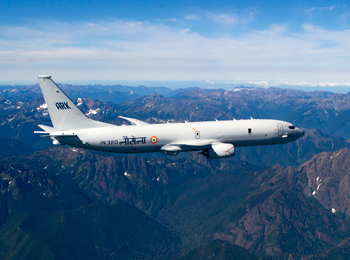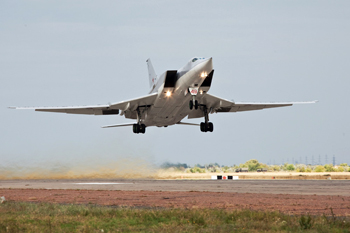INDIAN ARMED FORCES CHIEFS ON
OUR RELENTLESS AND FOCUSED PUBLISHING EFFORTS

SP Guide Publications puts forth a well compiled articulation of issues, pursuits and accomplishments of the Indian Army, over the years

I am confident that SP Guide Publications would continue to inform, inspire and influence.

My compliments to SP Guide Publications for informative and credible reportage on contemporary aerospace issues over the past six decades.
- Prime Minister witnesses 'Bharat Shakti' – a Tri-Services Firing and Manoeuvre Exercise in Pokhran, Rajasthan
- Interim Defence Budget 2024-25 — An Analysis
- Union Defence budget 2024
- Prime Minister Modi Commemorates Indian Navy Day in a Grand Ceremony
- Prime Minister Modi Flies in the LCA Tejas
- New Chapter in India-Italy Defence Ties
- Airpower beyond Boundaries
Adding military muscle — Address foot soldier too
 |
By Lt. General P.C. Katoch (Retd) Former Director General of Information Systems, Indian Army |


In a boost to the Indian Navy comes the news that India has signed a $1.1-billion deal to procure four more Poseidon-8I long-range maritime patrol aircraft from the US, with the first to be delivered in 50 months.
The Indian Navy already has eight PI aircraft that were signed for in a $2.1-billion deal during 2009 and inducted between May 2013 and October 2015. Two P-8I aircraft are presently deployed as part of the search and rescue operation for the An-32 that went missing over the Bay of Bengal on July 22. P-8I aircraft have a range of 1,200 nautical miles and are armed with Harpoon Block-II missiles, MK-54 lightweight torpedoes, rockets and depth charges. The US Navy has been using the P-8I for anti-submarine warfare (ASW), anti-surface warfare (ASUW) and ship interdiction, electronic signals intelligence (ELINT), and is designed to operate with the MQ-4C Triton Broad Area Maritime Surveillance UAV developed by Northrop Grumman.
Navies of UK and Australia are also acquiring the P-8I aircraft. ASW, ASUW and long-range surveillance aircraft vital to the Indian Navy in the light of the Indian Ocean fast emerging as the centre of gravity of conflict, Chinese strategic designs on the Indian Ocean region (IOR), Chinese nuclear submarines already prowling the India Ocean, Gwadar being developed as a Chinese SSBN base and Pakistani plans to deploy her nuclear deterrent at her surface vessels and underwater on Chinese submarines. The combined China-Pakistan threat at sea increases the significance of the P-8I aircraft.
The good news for the Indian Air Force (IAF) is that the Ministry of Defence (MoD) is looking at procuring 4 x Tu-22M3 bombers from Russia. The Tu-22M3 has an operational range of 7,000 km with cruise speed of 900 km per hour and maximum speed of 2,300 km per hour, and climb at the rate of 15 metres per second. The operational range can be enhanced with in-flight refuelling, and India is considering direct purchase of six flight refuelling aircraft (FRA) to enhance the reach of fighter, bomber and surveillance aircraft.
Tu-22M3 has hard points to carry Kh-22 stand-off missiles, Kh-15 nuclear or Kh-15P anti-radar missiles and FAB-250 or FAB-1500 free fall bombs. The wing and fuselage pylons and internal weapons bay are provided with a capacity to carry 24,000 kg weapons payload. The aircraft is also armed with a double-barrel GSH-23 (23mm) gun in the remotely controlled tail turret. Acquisition of the Tu-22M3 strategic bombers will be big boost to the IAF’s air defence capability, especially when India is also keen to procure 12 x S-400 ‘Triumf’ anti-aircraft missile systems, also from Russia.
In addition to the Tu-22M3 supersonic bombers, the IAF is also keen to purchase 80 Mi-17 helicopters and six Il-76 aircraft that can be fitted with Israeli ‘Falcon’ radars. Presently, the IAF has four squadrons of Mi-17IV (balance squadrons having been converted to Mi-17V), most of which are grounded being due for overhaul. The IAF expects to strike a deal with the manufacturer to establish overhaul facilities in India. The Mi-17V too would have to be phased out in due course unless overhaul facilities are established in India, provided it is cost effective. Procurement of 80 Mi-17 helicopters would therefore boost our helicopter-borne assault capability.
As for AWACS, in January 2004, India and Israel signed a $1.1-billion contract for three Phalcon airborne warning and control system (AWACS) aircraft, as part of a $1.5-billion tripartite agreement with Russia. With the arrival of its first IL-76 Phalcon, India joined the global ranks of AWACS operators. The aircraft has to monitor huge swathes of Indian airspace, intercept communications and log radar frequencies, add some ground surveillance, and help command IAF responses. Presently the IAF hold only these three AWACS and the IAF is looking to procure another six Il-76 to augment this capability. AWACS are major force-multipliers in providing early warning about hostile threats at ranges over 400 km in all-weather conditions, also acting as autonomous command and control centres. There has also been talk in the past of an indigenous project to develop AWACS but this has reportedly not gone beyond the drawing board stage.
India is also looking at leasing two nuclear submarines of the Akula-2 class from Russia, with the option to purchase them after completion of the lease term. This is over and above Russia soon delivering a second Shchuka-B nuclear submarine under Project 971 to India after the contract is signed; follow up to the first such submarine ‘Chakra’ delivered to the Indian Navy under lease in 2012. India also plans to produce over 1,000 x T-90S tanks and 200 Ka-226 helicopters in collaboration with Russia under the ‘Make in India’ programme.
All this will give a big boost to our military but the million-dollar question still remains unaddressed – why are we so complacent about arming the foot soldier?





